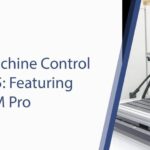The Power of CNC Controller Software and Firmware Updates
CNC (Computer Numerical Control) machines are the backbone of precision manufacturing across aerospace, automotive, electronics, energy, and medical sectors. To keep throughput high and scrap low, the control layer must evolve with production demands.
Regular software and firmware updates are not just “nice to have”—they’re essential for accuracy, uptime, safety, and seamless integration with modern digital workflows.
Why Updates Matter in Precision Manufacturing
Updates close performance gaps, unlock new features, and harden systems against failure. In competitive environments where lead times shrink and tolerances tighten, staying current directly improves part quality, cycle time, and total cost of ownership (TCO).
Put simply: updated controllers deliver more consistent results with fewer interventions.
Software Updates: What You Gain
CNC controller software orchestrates the user experience, toolpath generation, and integration with upstream/downstream systems. Keeping it current enables:
- Advanced toolpath algorithms for cleaner surfaces and shorter cycles (look‑ahead, jerk limits, S‑curves).
- Smarter CAD/CAM handoff with better post‑processing, feature recognition, and fewer reprogramming loops.
- New machining strategies (adaptive roughing, high‑speed finishing, trochoidal milling) that reduce tool wear.
- Improved HMI and usability—context help, customizable dashboards, and role‑based screens.
- Analytics and traceability—richer logs, alarms, and data exports for OEE and quality systems.
Firmware Upgrades: Tuning the Hardware Layer
Firmware is the real‑time bridge between software intent and physical motion. Upgrades typically deliver:
- Higher motion fidelity via refined servo loops, interpolation, and backlash/thermal compensation.
- Stability fixes that remove edge‑case faults causing rare but costly stoppages.
- Expanded device compatibility with new encoders, drives, probes, and I/O modules.
- Longer asset life by operating hardware within tighter, smarter control envelopes.
Safety, Compliance & Cybersecurity
Safety is non‑negotiable. Current releases often include:
- Patched vulnerabilities and hardened comms (encryption, authentication, logging).
- Enhanced interlocks and alarms for guarding, E‑stop chains, and axis limits.
- Standards alignment for auditability and regulatory compliance in aerospace/medical environments.
Efficiency, Throughput & Energy
Every second and every kilowatt matters. Updated controllers help you:
- Reduce idle and wait states with faster program parsing and smarter data caching.
- Optimize feeds/speeds automatically under variable load conditions.
- Lower energy per good part through intelligent spindle and axis power management.
- Boost first‑pass yield with improved probing cycles and in‑process measurement.
Compatibility & Interoperability
Modern factories depend on connected systems. Updates preserve compatibility with:
- New hardware (servo drives, touch probes, ATCs, sensors).
- Factory systems via common protocols and data formats (e.g., OPC UA/MTConnect, CSV/JSON exports).
- Automation cells and robots with better handshakes, safe states, and recovery procedures.
- Industry 4.0 initiatives like cloud dashboards, condition monitoring, and predictive maintenance.
Update Strategy: How to Roll Out Without Disruption
A disciplined process turns updates into quick wins instead of risky events:
- Inventory & baseline: Capture current versions, parameters, ladders/macros, and axis tuning.
- Read the notes: Review vendor release notes for feature dependencies and breaking changes.
- Stage environment: Validate on a test machine or digital twin; confirm motion quality and cycle time.
- Backup & rollback: Create full images and parameter backups; prepare a one‑click rollback.
- Change window: Schedule during planned downtime; communicate scope and expected impact.
- Validation plan: Run golden parts, probe checks, and acceptance tests post‑update.
- Train & document: Update SOPs/HMIs screenshots; brief operators and maintenance.
KPI Framework to Measure Impact
Demonstrate value with clear before/after metrics:
- OEE (Availability/Performance/Quality)
- MTBF / MTTR and unplanned downtime hours
- First‑pass yield and scrap/rework rates
- Energy per good part (kWh/part)
- Average cycle time on golden parts
Common Pitfalls—and How to Avoid Them
- Skipping backups: Always image the controller and export parameters before touching firmware.
- Mixed firmware stacks: Keep drives, encoders, and controller firmware at compatible levels.
- Ignoring plug‑ins/macros: Re‑test third‑party add‑ons; some rely on deprecated calls.
- Weak change control: Log version changes, dates, and approvers; tag machines in the CMMS.
- No operator briefings: UI shifts and alarm behaviors can surprise teams—train in advance.
When to Update vs. Upgrade
- Update when you need performance fixes, security patches, or incremental features.
- Upgrade (major version/hardware refresh) when adding axes, adopting new processes, or integrating advanced analytics where current hardware is a bottleneck.
A simple rule: if updates are frequent workarounds for hardware limits, plan a controller upgrade.

Radonix: 16+ Years of CNC Expertise
With more than 16 years of CNC controller design experience, Radonix is among the few Middle East companies mastering both the software UX and the real‑time motion layer. We help manufacturers plan staged updates, validate motion quality, secure their networks, and connect machines to MES/ERP/CMMS—without disrupting production.
What we deliver:
- Update audits, backup/rollback playbooks, and staging environments.
- HMI customization, probing libraries, and macro optimization.
- Secure connectivity and data models for OEE and predictive maintenance.
Contact Us:
📧 info@radonix.com
📞 +90 553 920 5500
Conclusion
CNC controller software and firmware updates unlock better accuracy, higher throughput, safer operations, and smoother integrations—four levers of competitive advantage in precision manufacturing. With a structured rollout and the right partner, updates become a low‑risk, high‑ROI habit that keeps your machines—and your business—performing at their best.








